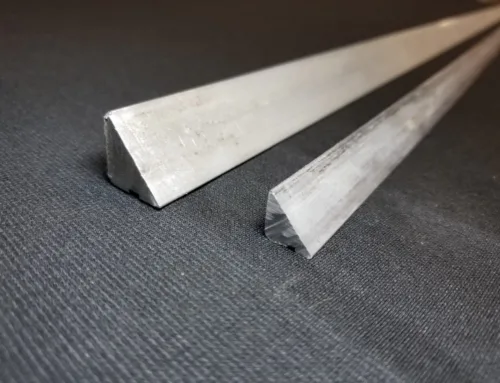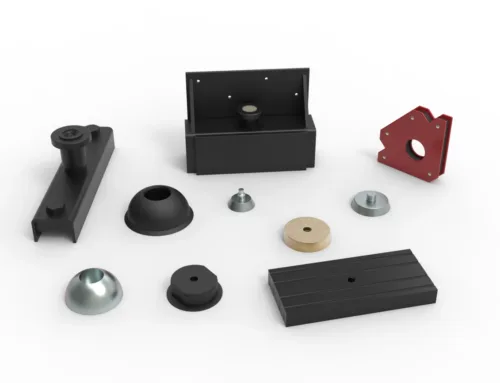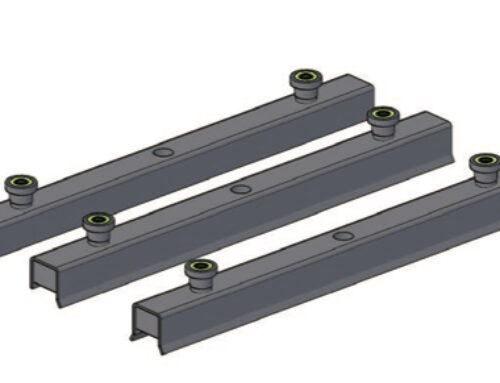What Is a Flat Magnet
A flat magnet is a type of permanent magnet designed with a thin, flat profile, often in the form of a disc or rectangular plate. Unlike cylindrical, ring, or large block magnets, flat magnets are optimized for applications where surface contact and space efficiency are essential. Their low-profile shape allows them to fit into compact devices while still providing strong magnetic performance.
Physically, flat magnets have wide surfaces and minimal thickness, which makes them ideal for creating even magnetic contact with other flat surfaces. This design not only improves adhesion but also helps distribute magnetic force more evenly compared to bulkier geometries.
These magnets are made from several common materials, each offering unique performance benefits:
- Neodymium (NdFeB) – Known for exceptional magnetic strength in compact sizes
- Ferrite (Ceramic) – Cost-effective and corrosion-resistant, suitable for outdoor or damp environments
- Samarium Cobalt (SmCo) – Highly durable with excellent heat resistance for demanding applications
By combining the right material with the flat shape, manufacturers can produce magnets that meet very specific performance needs — from high-energy motors to sleek consumer electronics. For more on how magnet materials influence performance, you can explore what makes rare earth magnets unique here.
Types of Flat Magnets
Flat magnets come in different materials and designs, each offering unique benefits depending on where they’re used. Here are the most common types you’ll find in the U.S. market:
- Neodymium Flat Magnets (NdFeB) – These are the strongest and most compact. They pack a lot of magnetic force into a small, thin shape, making them ideal for tech devices, tools, and applications where space is tight but high strength is needed.
- Ferrite Flat Magnets – Also called ceramic magnets, they’re cost-effective, corrosion-resistant, and work well for outdoor or damp environments. They’re common in speakers, motors, and household items.
- Samarium Cobalt Flat Magnets – Known for handling high temperatures and resisting wear, they’re perfect for high-performance machinery, automotive systems, and aerospace applications.
Flat magnets can also be customized in:
- Sizes – From tiny discs to larger rectangular plates.
- Coatings – Nickel, epoxy, or other finishes to protect against rust or wear.
- Magnetization Directions – Adjusted for how the pull is applied in your project.
This range of materials and customization options makes it easy to match a flat magnet to your exact application and durability needs.
Magnetic Properties of Flat Magnets
Flat magnets have a magnetic force that’s usually directed through their flat surfaces—either face-to-face or through the thickness—depending on how they’re magnetized. This makes them perfect for applications where you need a strong pull across a large, flat contact area.
Because of their shape, the magnetic flux in flat magnets tends to spread evenly across the surface instead of concentrating at one point like it does with cylindrical or irregular-shaped magnets. That even distribution means they grip better on flat metal surfaces and deliver more consistent holding strength.
In real-world use, this translates to:
- Better surface contact for stronger adhesion
- Improved holding power without needing a large magnet
- Less “sliding” since the full face engages with the material
- Efficient magnetic field use for stability in compact designs
These properties make flat magnets ideal for uses where stability, space-saving, and strong surface bonding are a priority.
Common Applications of Flat Magnets
Flat magnets are used almost everywhere because of their thin profile and strong grip. In industrial settings, they play an important role in motors, sensors, magnetic bearings, medical devices, and various electronic assemblies where space is tight but performance matters. Their flat design lets them fit into compact machinery without sacrificing strength.
For consumer uses, you’ll see thin flat magnets in fridge magnets, cabinet closures, craft projects, toys, and wearable gadgets. Their smooth surface makes them easy to attach with adhesives or mount into products.
They’re also becoming more important in renewable energy and automotive industries. In electric motors, battery systems, and wind turbine generators, flat magnets help improve efficiency while keeping equipment lightweight and streamlined. In vehicles, they’re used in sensors, displays, and compact actuators where every millimeter of space counts.
The big advantage is performance in compact designs — flat magnets give strong surface contact, hold well on metal, and fit in slim spaces. That’s why they’re a go-to for engineers and product designers looking for both power and space savings.
Advantages of Using Flat Magnets
Flat magnets come with a few clear benefits that make them a go-to choice in many industries and everyday products:
How to Choose the Right Flat Magnet for Your Needs
When you’re picking a flat magnet, a little planning goes a long way. The right choice depends on what you’re using it for, the environment it’s in, and the performance you expect. Here’s what to look at:
Key Factors to Consider
| Factor | Why It Matters | Tips |
|---|---|---|
| Material | Impacts strength, cost, and durability | Neodymium for high strength, Ferrite for budget-friendly + corrosion resistance, Samarium Cobalt for heat tolerance |
| Size & Thickness | Affects holding power and fit | Thicker = stronger, but balance with space constraints |
| Coating | Adds protection and improves performance | Nickel, epoxy, or rubber coating for wear and corrosion protection |
| Magnetic Strength | Determines holding force | Match pull force to the weight you need to hold or secure |
Environmental Considerations
- Temperature Resistance – If used near engines, machinery, or outdoors, choose a high-temp material like Samarium Cobalt.
- Corrosion Resistance – For humid, marine, or outdoor environments, pick ferrite or coated neodymium.
Customization and Supplier Support
Working with a manufacturer like NBAEM means you can:
- Get custom sizes, shapes, and magnetization directions
- Choose from various coatings for protection and appearance
- Ensure magnets meet industry certifications for safety and quality
- Get technical support for design and application challenges
For U.S. buyers, NBAEM can tailor production to your specs, ship globally, and provide localized service to make integration into your products faster and easier.
NBAEM’s Flat Magnet Solutions
NBAEM offers a wide range of flat magnets designed for different industries, from electronics and automotive to renewable energy equipment. Their product line covers popular options like neodymium flat magnets for high strength in small sizes, ferrite flat magnets for cost-efficient bulk applications, and samarium cobalt flat magnets for heat-resistant and high-performance needs.
Every flat magnet from NBAEM goes through strict quality checks and meets international standards like ISO 9001 and RoHS, so you can count on consistency and reliability.
If you need custom flat magnets, NBAEM can tailor the material, size, thickness, coating, and magnetization direction to fit your exact requirements. Their engineering team provides technical support to help match the right magnet to your application, whether you need stronger holding power, specific coatings for corrosion resistance, or specialized dimensions for compact designs.
Based in China, NBAEM serves U.S. businesses with global shipping and responsive local service support, making it easy for companies of all sizes to source high-quality flat magnets without long lead times.





Leave A Comment